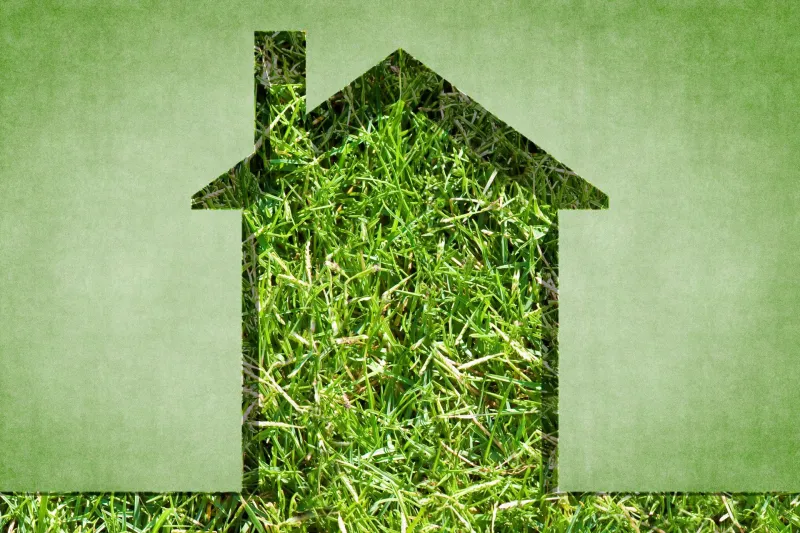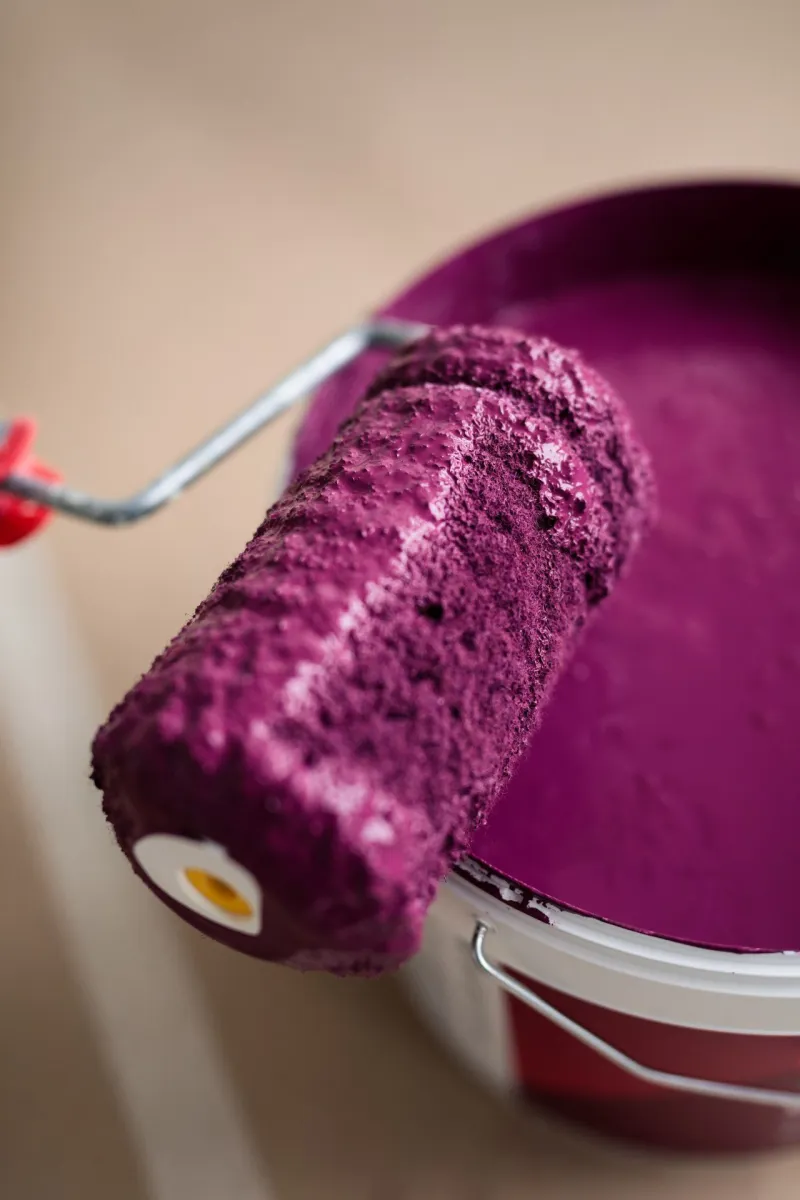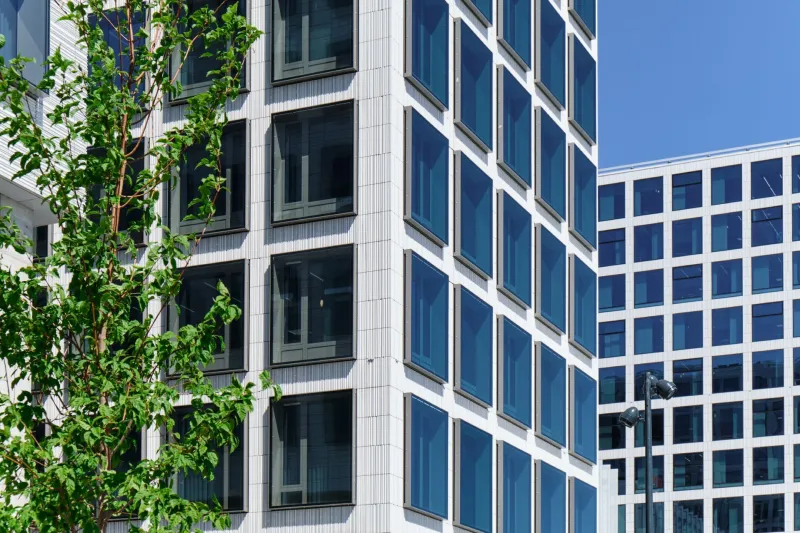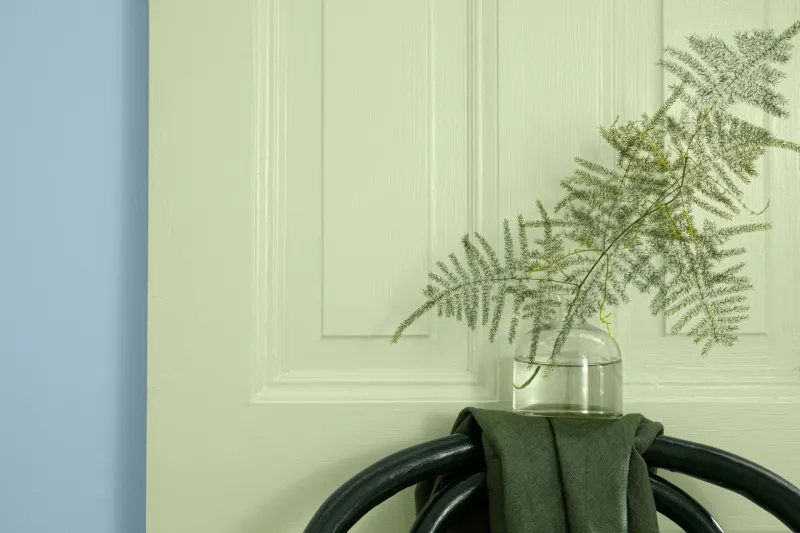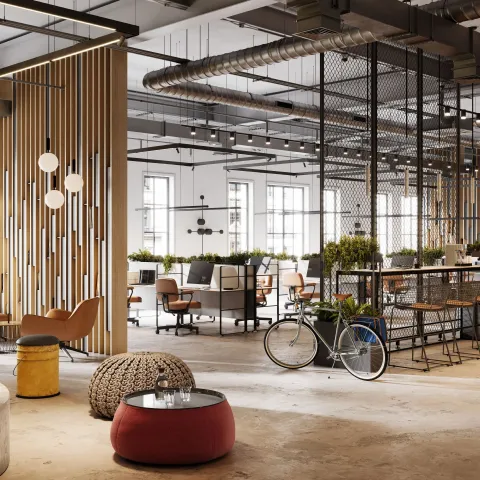Green Building – How to pick paint products for sustainable building
Table of contents
Buildings produce roughly a third of all greenhouse emissions and comprise about 40% of our total energy use. This is why we have been investing in more sustainable and energy-efficient ways of building for quite some time.
The pressure to adopt more eco-friendly approaches to construction comes not only from within the industry but also from global megatrends, such as population growth, urbanization, a rise in the standard of living, and the growing middle class. These trends have created new urgency to mitigate climate change and improve resource efficiency. For our limited resources to last for future generations, we have to move away from a throw-away society and embrace more sustainable ways.
In the construction industry, high-minded declarations have actually led to concrete action. The environmental certification systems LEED and BREEAM have been created to make it easier to measure, verify, and compare the environmental efficiency of properties on a practical level.
Sustainable building - Good for health, economy and the environment
A healthy property with a long lifespan is one of the goals of sustainable building. Demolition is always a burden on the environment, so it’s better to favor products and ways of building that extend the lifespan of a property.
This is why eco-friendly construction benefits property owners: it leads to a slower depreciation of property value, higher utilization, lower maintenance costs, and often a higher selling price.
Products with minimal emissions are important for ensuring high-quality indoor air, which benefits the well-being of property users. In many European countries, where interior air has long been an issue, high-quality interior air gives you a competitive edge.
Paints and coatings have an important role in green building
We at Tikkurila want to do our part in promoting sustainable development and eco-friendly construction, so we are committed to the goals of the international Green Building Council. Our purpose here is to tell you what types of paints and coatings are suitable for sustainable building.
Part 1: A decade of Green building
Sustainable construction, or green building, is not really a new idea. The world's first green building rating tool BREEAM was first launched already in 1990.
We at Tikkurila, launched our first water-borne paint around 70 years ago. Today we have over 300 products that have been awarded an international or national ecolabel, allergy and asthma label or M1 classification ensuring low emissions. Our aim is to pioneer in Green Building solutions by providing paints and coatings that are better for the environment as well as the health and safety of building users.
However, legislation and environmental criteria change constantly, and understanding them is not always easy. This is why we want to help our clients as much as we can.
On this page, we have collected as much information as possible about the way environmental certification criteria affect paint product selection – and what types of paint are suitable for sustainable building.
Part 2: What differences are there between LEED and BREEAM classifications?
Selecting a paint or coating suitable for green building always depends on the site and the environmental certificate used. LEED and BREEAM are the two most common environmental certificates used in Europe.
While all environmental certification systems are designed to ensure responsible, eco-friendly, and low-emission construction, the systems are not identical.
The table below lists the most significant differences and similarities between the three most common environmental certificates.
|
|
LEED (Leadership in Energy and Environmental Design) |
BREEAM (Building Research Establishment Environmental Assessment Method) |
|
In use since |
1998 |
1990 |
|
Country of origin |
USA |
Great Britain |
|
In short |
LEED is the world’s most widely used green building certification system. To be certified, a building has to meet certain minimum requirements. |
BREEAM is the leading environmental classification system in Europe. It’s designed to minimize the environmental impact of construction. |
|
Categories evaluated |
Land use |
Project management |
|
Building types |
Particularly well suited for: Offices
Sub-systems for project types: Accommodation Residential buildings |
Suitable for: Schools Also well suited for renovation. All building types customizable. |
|
Rating scale |
Certified |
Pass |
|
Approval |
In the LEED system, the project team will themselves collect the documentation needed and then submit it to the USGBC (U.S. Green Building Council) for evaluation. The certification application is inspected and granted by GBCI (Green Building Certification Inc.), overseen by USGBC. |
The BREEAM system requires that a trained BREEAM assessor is always involved. The assessor verifies that all project requirements are met. |
|
Documentation |
There is quite a lot of paperwork involved for the project team. |
Less paperwork than LEED, managed by an assessor rather than the project team. |
|
Indicators |
Based on the ASHRAE standard (American Society of Heating, Refrigerating and Air Conditioning Engineers). |
For measuring carbon dioxide emissions (designed to reduce them). |
|
Positives |
Common criteria globally, easy to make comparisons. |
Indicators designed for European conditions can easily be applied to Finland. |
|
Negatives |
Many requirements are based on American policies, but European policies can be applied to some of the requirements. |
Not as widely used as LEED, so fewer options for comparison. |
|
Note for coatings |
Look for products with minimal VOC content and emissions. |
Look for products with the M1 emission classification and low VOC content. |
|
Read more |
Part 3: Which characteristics indicate that a product is suitable for green building?
Low emission and durable are the two characteristics that products suitable for green building have in common. As each repaint further stresses the environment, a long maintenance painting interval adds value to a product.
The environmental certificates also stress low VOC content and indoor air quality criteria-related emissions. In other words, VOC content and emission levels of paint products should be minimal in order to meet the criteria of environmental certificates.
No universally applicable guidelines for VOC content or emissions exist as the criteria vary based on the site and the environmental certification used. For more about this, see below.
Low emission paints are better for health and the environment
One of the most widely used classifications for building material emissions is M1. Developed and published by The Finnish Society of Indoor Air Quality and Climate (Sisäilmayhdistys) in 1996, the M1 classification sets limit values for the emission of VOC, formaldehyde and ammonia.
Want to learn more about M1 products and how do they contribute to a sustainable built environment? Read our article about M1 as a tool for sustainable, healthy indoor environments.
Why can't the paint or coating simply say LEED or BREEAM certified?
LEED and BREEAM certificates are always granted to a building or a residential area – not to an individual construction product. Environmental certification logos also have rights that limit their use.This is why a LEED or BREEAM logo cannot simply be slapped onto a paint can.
However, the product data sheet can state that the paint or coating meets the LEED v4 (for projects outside the USA as per approved methods) and the BREEAM, BREEAM-SE and BREEAM-NOR classification system requirements.
The changing criteria of green building projects poses another challenge. In BREEAM, for example, the demands vary in different building projects. This means that the criteria vary depending on whether the site is:
- a new building,
- a building already in use, or
- a building to be renovated.
This is why it is not possible to provide universally applicable guidelines.
For the best advice when selecting paints and coatings, refer to the construction project’s environmental certification consultant who will consult designers and contractors. When the specific criteria are known, we at Tikkurila are happy to help you pick the right product.
How surface treatment solutions help score green building points
Paints and coatings that offer durability, high-quality indoor air and heat-reflective properties can give you a competitive edge when designing a building to meet LEED, BREEAM, RTS, WELL or other sustainability standards.
Selecting a paint or coating suitable for green building always depends on the site and the environmental certificate used: is it a new or existing building, what version of the standard is being used, etc.
There are, however, some general guidelines to help you attain certification points on green building projects. Read more in our article about how surface treatment solutions help to score green building points
Part 4: Leading the way into the future with product development
The Tikkurila Group currently offers over 300 ecolabeled products with either a national or an international eco label or a low-emission M1 classification for construction materials.
New products are constantly developed as we want to proactively anticipate changes in legislation and the criteria of ecolabels and construction materials. This is the only way we can provide our clients with the best help and the best service.
Sustainable development and clean indoor air
The sustainable development of built environments and products that promote good indoor air quality play a particularly important role at the moment. This is why we strive to develop products with a long maintenance painting interval and minimal impact on the environment.
Proactive product development and uncompromising quality control ensure that we can meet the demands of the industry now and in the future. We believe that continuous development is necessary to attain the goals of sustainable development.
A new decade of green building is just beginning.
Want to learn more about green buildings? Please subscribe to our newsletter for architects and designers and stay up-to-date with our latest news.
Part 5: Frequently Asked Questions about green building
Need more information? We’ve answered some frequently asked questions about green building below, but if you still can’t find the answers you’re looking for, get in touch! We’re happy to help.
How do I know which products meet the requirements of my project?
There are several versions of the LEED and BREEAM environmental certification systems with country-specific differences in requirements as well as different requirements for different buildings or individual site-specific projects. This makes it impossible to provide universally applicable guidelines as to which products are suitable.
In practice, which coatings are suitable will vary depending on the type of site you are designing. As a guideline, VOC content and emissions in paint products should be as low as possible, but it is not possible to specify universally applicable values for the above-mentioned reasons.
To find the required limits for your project, contact the environmental certification consultant overseeing the project. They will have access to a database of low-emission coatings, including applicable Tikkurila products.
What are emission and VOC content requirements?
Volatile organic compound (VOC) emissions contribute to ozone in the lower atmosphere.
Depending on the environmental certification system, you need to:
determine the product’s VOC content either mathematically or based on the ISO 11890-2:2006 standard using gas chromatography, and know the product’s VOC content and whether it is within the VOC directive 2004/42/EC Annex II Phase II limit values or the VOC content limit values defined in the environmental certification system.
Some environmental certification systems have restrictions on emissions, that is, volatile compounds emitted by paint products. The relevant volatile compounds, their limit values, and the time of the emission measurement vary according to the environmental certification system version, so it’s a good idea to turn to a Tikkurila expert for help with picking the right product.
Before doing this check with the project’s environmental certification consultant to find out any usage restrictions imposed on products.
Which combinations of treatments and paint products are suitable for my site?
Suitable treatment and paint product combinations are always project specific, whether it’s a LEED, BREEAM, RTS, or Nordic Swan Ecolabel project. Every building-related environmental classification certificate focuses on different aspects of applicable products, meaning that the “right product” depends on the site in question.
For example, some environmental classification systems have requirements for the putty applied under the paint layer while others aren’t concerned with this at all.
Restricted paint chemicals also vary according to the environmental classification system being used. For example, in some systems products are not allowed to contain Bisphenol A, chrome, lead, or cadmium.
This is why it is not possible to provide universally applicable guidelines; suitable products need to be identified individually for each project.
Can a product be LEED or BREEAM certified?
LEED and BREEAM certificates are applied for at the construction site, meaning that products used in construction cannot be awarded a certificate. A product can instead meet the requirements set for a product group in the environmental certification system, with these requirements varying by site.
If a product meets the site’s requirement level, a manufacturer-signed statement stating that fact is usually needed.
What information do I need before I contact a coating expert?
For an expert to help you pick the right product, they’ll need the following information:
Is it a LEED or BREEAM project?
Are there instructions for contractors or architects with paint product requirements specified?
If there isn’t, you need information on the specific requirements for paint products in your project. To get this you can refer to the project’s environmental certification consultant.
When you have the required information, we’ll be happy to help you pick the right product.
Here to help you
For the best advice when selecting paints and coatings, refer to the construction project’s environmental certification consultant. When the specific criteria are known, we at Tikkurila are happy to help you.
